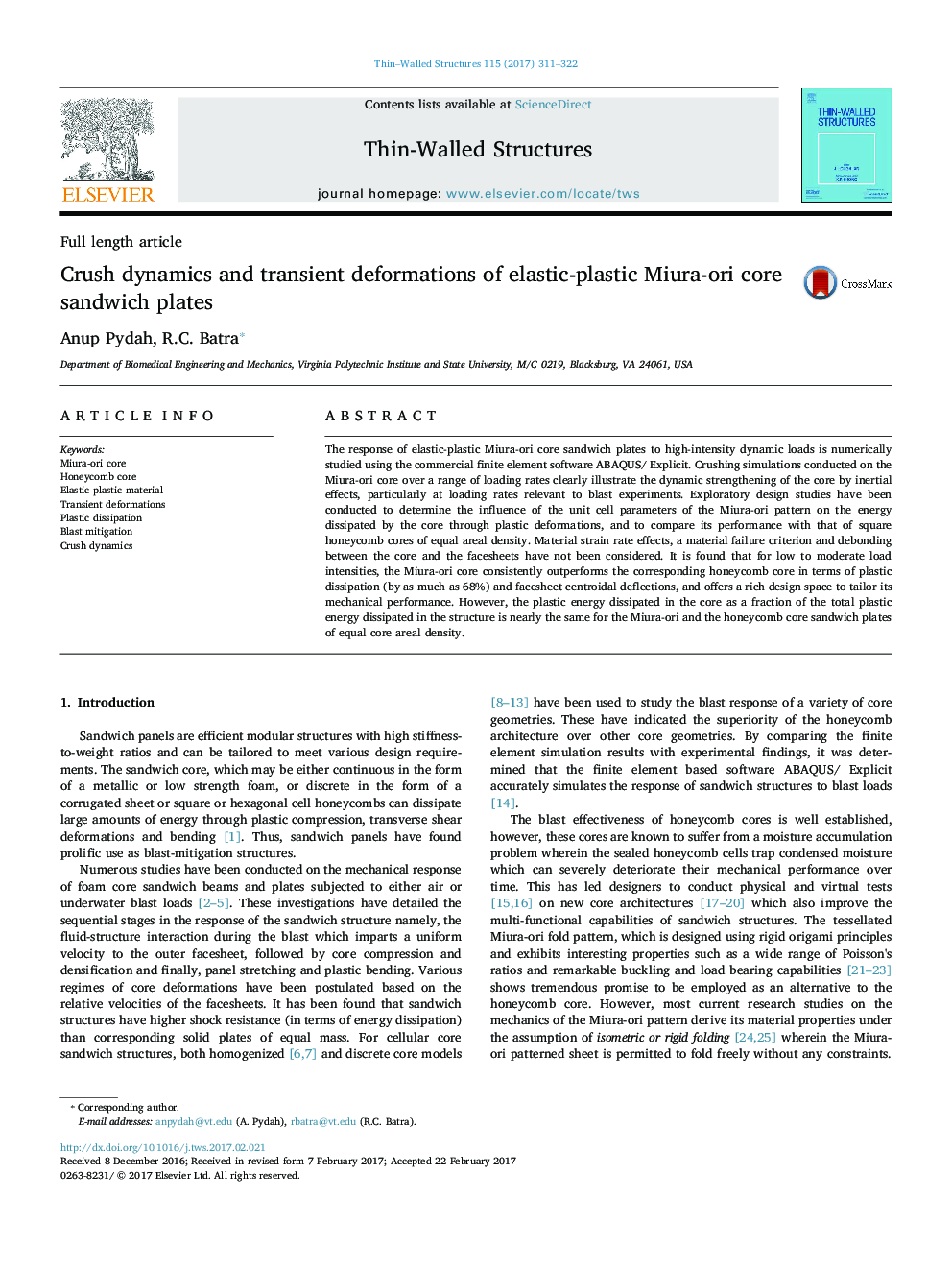| Article ID | Journal | Published Year | Pages | File Type |
|---|---|---|---|---|
| 4928666 | Thin-Walled Structures | 2017 | 12 Pages |
Abstract
The response of elastic-plastic Miura-ori core sandwich plates to high-intensity dynamic loads is numerically studied using the commercial finite element software ABAQUS/ Explicit. Crushing simulations conducted on the Miura-ori core over a range of loading rates clearly illustrate the dynamic strengthening of the core by inertial effects, particularly at loading rates relevant to blast experiments. Exploratory design studies have been conducted to determine the influence of the unit cell parameters of the Miura-ori pattern on the energy dissipated by the core through plastic deformations, and to compare its performance with that of square honeycomb cores of equal areal density. Material strain rate effects, a material failure criterion and debonding between the core and the facesheets have not been considered. It is found that for low to moderate load intensities, the Miura-ori core consistently outperforms the corresponding honeycomb core in terms of plastic dissipation (by as much as 68%) and facesheet centroidal deflections, and offers a rich design space to tailor its mechanical performance. However, the plastic energy dissipated in the core as a fraction of the total plastic energy dissipated in the structure is nearly the same for the Miura-ori and the honeycomb core sandwich plates of equal core areal density.
Related Topics
Physical Sciences and Engineering
Engineering
Civil and Structural Engineering
Authors
Anup Pydah, R.C. Batra,
